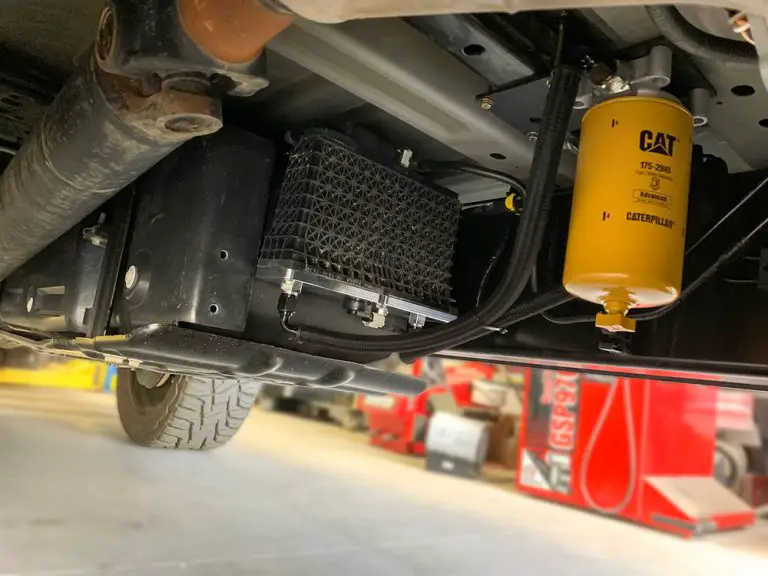Can You Can You Put Car Mats In The Dryer? (Full Guide 2023)
No, you should not put car mats in the dryer. Car mats are typically made of rubber, plastic, or fabric materials that can be damaged by the heat and tumbling action of a dryer. Instead, it’s recommended to clean car mats by hand using a hose, brush, and mild soap or a specialized car mat cleaner. Allow them to air dry completely before putting them back in your vehicle.
If you’re dealing with fabric car mats, they may be machine washable, but always refer to the manufacturer’s care instructions to ensure you’re using the correct method. Avoid using hot water or high heat settings in the dryer for fabric mats, as this can cause shrinkage or damage to any rubber or plastic backing. Always air dry them if possible.
How Often Should I Dry Car Mats?
The frequency of drying car mats largely depends on how dirty they become and the type of weather conditions they’re exposed to. It’s generally a good practice to inspect and clean your car mats regularly, especially if they’re visibly soiled or have accumulated moisture from rain or snow.
If you live in an area with a lot of rainfall or experience harsh winter conditions, it’s advisable to check and dry your mats more frequently to prevent mold or unpleasant odors from developing.
In more temperate climates or during drier seasons, you may not need to dry them as often. Ultimately, it’s essential to use your discretion and assess the condition of your car mats regularly to determine when they require cleaning and drying.
Can I Machine Wash Car Mats?
Yes, many car mats, particularly those made of fabric or carpet-like materials, can typically be machine washed. However, it’s crucial to consult the manufacturer’s instructions that came with your specific car mats, as different materials may have varying care requirements.
When machine washing car mats, it’s advisable to use a gentle cycle with cold or lukewarm water and a mild detergent. Avoid using bleach or harsh chemicals, as they can damage the material. If possible, wash the mats separately from other laundry items to prevent any potential transfer of dirt or debris.
Once the washing cycle is complete, allow the mats to air dry thoroughly before placing them back in your vehicle. Avoid using high heat settings or a dryer, as this can lead to shrinkage or damage, especially for mats with rubber or plastic components. Always follow the care instructions provided by the manufacturer to ensure the longevity and effectiveness of your car mats.
Can I Handwash Carpeted Car Mats?
Yes, you can definitely handwash carpeted car mats. In fact, handwashing is often the preferred method for cleaning these types of mats, as it allows for more control over the process and reduces the risk of any potential damage that can occur in a washing machine.
To handwash carpeted car mats, start by removing them from the vehicle and giving them a good shake to remove loose dirt and debris. Next, fill a bucket with a mixture of mild detergent and water.
Use a scrub brush or a soft-bristle brush to gently agitate the surface of the mat, paying extra attention to any stained or soiled areas. Rinse thoroughly with clean water to remove any soap residue.
After washing, allow the mats to air dry completely before placing them back in your car. Avoid using high heat or direct sunlight, as it can cause the carpet to shrink or fade. Handwashing carpeted car mats is an effective way to maintain their cleanliness and extend their lifespan.
What Is The Best Method Of Washing Rubber Mats?
The best method for washing rubber car mats involves a combination of manual cleaning and using a gentle detergent. Start by removing the mats from your vehicle and giving them a thorough shake to remove loose dirt and debris.
Next, fill a bucket with warm water and add a mild detergent. Use a scrub brush or a soft-bristle brush to gently scrub the surface of the mats, paying close attention to any particularly dirty or stained areas. Rinse the mats with clean water to remove any soap residue.
For more stubborn stains or grime, you can also create a mixture of equal parts water and white vinegar, and use a soft cloth or sponge to spot clean the affected areas. Rinse thoroughly afterwards. Once the washing process is complete, allow the mats to air dry completely before placing them back in your vehicle.
Avoid using a dryer or exposing them to direct sunlight for extended periods, as excessive heat can cause the rubber to deteriorate over time. This method not only effectively cleans rubber car mats, but also helps maintain their durability and longevity. Always consult the manufacturer’s instructions for any specific care recommendations.
Why Do I Have To Clean Car Mats?
Cleaning car mats is essential for several reasons. Firstly, car mats are constantly exposed to dirt, debris, and moisture that we bring in on our shoes. Over time, this buildup can become unsightly and unhygienic.
Neglecting to clean car mats can lead to the accumulation of bacteria, mold, and unpleasant odors, which can negatively impact the overall air quality inside your vehicle. Moreover, dirty and slippery mats can be a safety hazard, as they may cause your feet to slip off the pedals or hinder your ability to control the vehicle effectively.
Regular cleaning not only maintains the aesthetics of your car’s interior but also contributes to a healthier, safer, and more pleasant driving experience. It also helps prolong the lifespan of the mats by preventing premature wear and tear. Overall, routine cleaning of car mats is a crucial aspect of vehicle maintenance that shouldn’t be overlooked.
What Will Happen If I Put Mats Back In Without Drying Them?
If you put car mats back in your vehicle without allowing them to dry properly, several potential issues may arise. Firstly, moisture trapped in the mats can lead to the growth of mold and mildew.
This not only creates a musty, unpleasant odor but can also pose health risks for occupants, especially those with allergies or respiratory sensitivities. Additionally, damp mats can promote the development of bacteria, further contributing to an unhygienic environment inside your car.
If the mats are made of materials like fabric or carpeting, leaving them wet can lead to the breakdown of fibers and cause them to deteriorate over time. In the case of rubber or plastic mats, moisture can lead to the weakening of the material and potentially cause them to crack or become damaged.
Wet mats can also create a slippery surface, which can be hazardous while driving. Moisture on the mats can transfer to your shoes, potentially affecting your ability to control the pedals properly. In cold weather, wet mats can freeze, making them even more slippery and potentially causing safety issues.
It’s crucial to allow car mats to dry thoroughly before placing them back in your vehicle to maintain a clean, safe, and hygienic interior.
Where Is The Best Place To Clean Car Mats?
The best place to clean car mats depends on the materials they are made of and the resources you have available. Here are a few options:
Outdoors
If your car mats are rubber or plastic, the best place to clean them is outdoors. You can lay them flat on a driveway or a similar surface, and use a hose along with a brush and mild soap to scrub away dirt and grime. Ensure they dry completely before putting them back in your car.
Car Wash
Many self-service car wash facilities have high-pressure hoses and brushes that can be used to clean car mats effectively. Choose a bay with a floor drain to allow excess water to flow away.
At Home
If your car mats are fabric or carpeted, you can clean them at home with a vacuum cleaner and a carpet cleaning machine, if available. Spot-cleaning stains can be done with a mixture of water and mild detergent. Always check the manufacturer’s recommendations for care.
Professional Detailing Service
If you prefer a thorough and professional cleaning, consider taking your car mats to an auto detailing service. They have specialized equipment and cleaning solutions to handle a variety of mat materials.
What’s The Best Cleaner For Car Mats?
The best cleaner for car mats depends on the material of the mats. Here are some recommendations for different types of car mats:
Rubber or Vinyl Mats
For rubber or vinyl mats, a mild all-purpose cleaner or a specialized rubber and vinyl cleaner works well. You can also use a mixture of water and dish soap. Avoid harsh chemicals or solvents that can damage the material.
Fabric or Carpeted Mats
For fabric or carpeted mats, a carpet cleaner or upholstery cleaner is typically the best choice. Look for a product specifically designed for automotive use. Always test a small, inconspicuous area first to ensure it doesn’t cause any discoloration or damage.
All-Weather or All-Season Mats
These are often made of a combination of rubber and fabric. In this case, you can use a mild cleaner that is safe for both rubber and fabric. Again, always test in a small area first.
Natural Fiber Mats
These mats require a more gentle approach. A mixture of mild soap and water should suffice. Be careful not to saturate them, as natural fibers can be more delicate.
Frequently Ask Questions
Can I put my car mats in the dryer to dry them quickly?
No, it is not recommended to put car mats in the dryer. The heat and tumbling action of the dryer can potentially damage the material, especially if the mats are made of rubber, plastic, or have a fabric backing.
What’s the best way to dry car mats then?
The best way to dry car mats is by allowing them to air dry naturally. After cleaning, hang them or lay them flat in a well-ventilated area. Avoid direct sunlight and high heat sources, as these can also cause damage.
How long does it take for car mats to air dry?
The drying time for car mats can vary depending on factors like material, humidity, and airflow. In a well-ventilated area, rubber mats may take a few hours to dry completely, while fabric mats may take longer.
Can I speed up the drying process using a fan or a hair dryer?
Yes, using a fan or a hair dryer on a low, cool setting can help expedite the drying process. However, be cautious not to use high heat, as it may cause damage to the mats.
Are there any special considerations for fabric or carpeted car mats?
Yes, fabric or carpeted car mats may take longer to dry. It’s important to ensure they are completely dry to prevent mold or odors. You can blot excess moisture with a towel and use a fan to facilitate drying.
Can I hang car mats on a clothesline to dry?
Yes, hanging car mats on a clothesline in a shaded area with good airflow is a good method for air drying. This helps prevent any potential damage that direct sunlight or high heat sources can cause.
Conclusion
Maintaining clean and dry car mats is essential for both the aesthetics and safety of your vehicle’s interior. While it’s tempting to use a dryer for convenience, it’s best to avoid this method, especially for mats made of rubber, plastic, or with fabric backings. Instead, opt for air drying in a well-ventilated area, away from direct sunlight or high heat sources.Regular cleaning of car mats, using appropriate cleaners for their specific material, ensures they remain free from dirt, stains, and odors. By adopting these practices, you’ll not only prolong the lifespan of your car mats but also maintain a clean, comfortable, and enjoyable environment for every ride.


